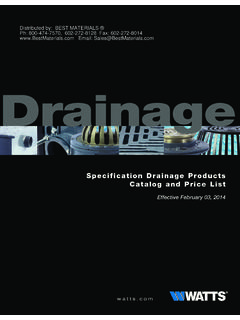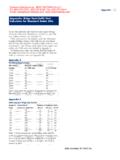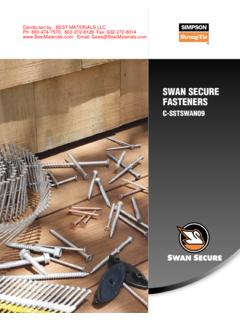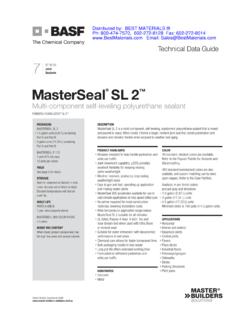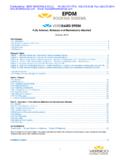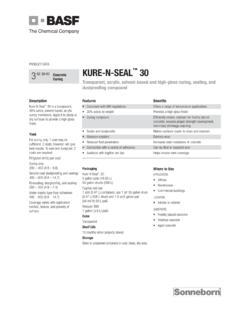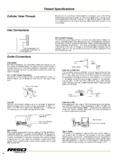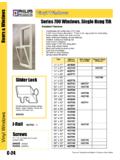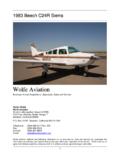Transcription of HOT AIR WELDING GUIDE FOR PLASTIC REPAIRS
1 HOT AIR WELDING GUIDE FOR PLASTIC REPAIRS Introduction Most motor vehicles built today as well as many other modern products have components made from plastics . For example, in automobiles and truck, bumpers, grilles, spoilers, light surrounds and even complete body panels enable designers to enhance aerodynamic styling and cosmetic appeal while retaining impact resistance and eliminating corrosion. PLASTIC offers the structural strength of steel by virtue of its greater elasticity. Minor impacts that could deform steel beyond repair can be absorbed by PLASTIC . Where damage is incurred, repair by WELDING is possible without a loss of component strength.
2 Cracks, splits, warping and even the loss of material can be remedied with the aid of the BAK RION type hot air WELDING equipment. Where a steel component, with the equivalent damage, would be renewed at some cost, the repair of the PLASTIC part can save time and expense, particularly when winter accident periods make great demands on the repairer's parts stock. A PLASTIC component can be quickly restored to an "as new" condition without the need for fillers or special treatments. The combination of WELDING and the recommended repaint procedures will show no trace of a repair that should last the life of the vehicle. BAK hot air welders and accessories are commercially available and can be purchased online from dealer such as Best Materials: Distributed by: Best Materials LLC Identifying plastics The majority of plastics used in the motor vehicles vehicle are thermoplastics.
3 Heated until they soften, they can be molded or welded. There are different types of thermoplastics, each having a specified temperature for WELDING operations. Code PLASTIC ABS Acrylonitrile Butadiene Styrene ABS/PC Polymer alloy of above PA Polyamide (Nylon) PBT Polybutylene Terephtalate (POCAN) PC Polycarbonate PE Polyethylene PP Polypropylene PP/EPDM Polypropylene/Ethylenediene Rubber PUR Polyurethane (Not all PUR is weldable) PVC Polyvinyl Chloride GRP/SMC Glass Fiber Reinforced plastics (Not weldable) PLASTIC Recognition by Test WELDING If all other information is unavailable, a test weld can be tried on the back of the component using a known PLASTIC WELDING rods rod type.
4 Method 1. Fit the appropriate WELDING nozzle for the selected WELDING rod to the BAK RION hot air tool. 2. Set the WELDING temperature on the rotary control according to the WELDING rod material to be employed in the test (see Table in Main WELDING section). Allow the tool to attain the operating temperature. 3. Scrape the surface in the area of the test to remove any contamination. 4. Feed the WELDING rod through the nozzle and into contact with the surface of the component. 5. Following the technique described in Main WELDING operations, weld 2cm of the test rod to the surface of the component. 6. Remove the WELDING tool from the rod and then cut the rod approximately 2cm from the component surface.
5 7. Allow the weld to cool and then try to pull the rod from the surface of the component. If it can be pulled from the component, repeat the test with a different rod. If it stays firmly in place, the component PLASTIC has been positively identified. Appearance Because PLASTIC WELDING rod does not become completely molten, it may appear much the same before and after WELDING . One accustomed to WELDING metal a PLASTIC weld may see the weld as appearing incomplete. The reason is that only the outer surface of the rod has become molten while the inner core has remained hard. The welder is able to exert pressure on the rod forcing it into the joint to create a permanent bond.
6 When heat is taken away the rod reverts to its original form. Thus, even though a strong permanent bond has been obtained between the WELDING rod and base material, the appearance of the WELDING rod is much the same as before the weld was made, except for molten flow patterns on either side of the bead. Temperature Control WELDING temperature can be precisely controlled in the BAK welder to accommodate most any PLASTIC material. Adjustment is made by the Potentiometer Control Setting. Measurement can be easily checked with a thermocouple: Thermoplastic Code WELDING Temperature C Tack Weld Nozzle 28 Pendulum Weld Standard Nozzle 31A Speed Weld Nozzle 27 (3mm) Speed Weld Nozzle 27B ( ) ABS 350 ABS/PC 350 PA 400 PBT 350 PC 350 PE hard (HDPE) 300 PE soft (LDPE) 270 PP 300 PVC hard 300 PVC soft 350 Most all thermoplastics can be welded.
7 The quality or ability to be welded is governed by the extent of their melting range; those with the widest melting range are easiest to weld. The two most popular thermoplastics for fabrication are polyvinyl chloride (PVC) and polypropylene. Here is a list of PLASTIC WELDING temperatures (in centigrade, when welded at 20C): ABS 350 C Acrylic 350 C Hard PVC 220 - 300 C Hypalon 600 C Lucobit 600 C Polycarbonate 350 C Polyethylene (Hard) 250 - 280 C Polyethylene (Soft) 270 - 300 C Polyisobutylene 600 C Polypropylene 300 C Polystyrol 250 C Polyvinylidene Fluoride 350 C Selection of Tips Many tip shapes and sizes are available for all types of WELDING conditions.
8 A complete selection can be found here: and Surface Preparation Simple preparation steps will insure successful REPAIRS . PLASTIC components can be repaired from the front or rear according to ease of access. Reinforcement welds can be used across the rear of a front repair to restore strength to areas designed to withstand impact. The photographs on the following web pages demonstrate a repair on the front of a component. If the damage passes behind a decorative or protective trim, this must be removed from the damaged component to provide complete access to the repair area. Trims are usually fixed with an adhesive that softens with heat treatment.
9 Attempting to remove a trim that is cold can damage it beyond repair . The BAK RION hot air tool can supply 230 liters of air per minute at a precise temperature between 20 C and 700 C. For trim removal, the hot air tool is used without a WELDING nozzle at a temperature setting of 300 C. The temperature charts on the tool body show the rotary control setting to achieve the correct air temperature. Whenever the hot air tool is in use, the end of the element housing becomes extremely hot. Always rest the tool on its stand when not in use. Moving the hot air tool over the trip surface aids even heat absorption to soften the adhesive. It also prevents localized heat build-up.
10 When the adhesive is soft, the trip should pull away neatly and allow for reuse after the repair . WELDING Groove As in most WELDING , 90 V-shaped groove is used. It must be prepared along the crack to accept the WELDING rod and form strong repair . Begin by removing any paint or other coating from the repair area with a body file or sander. An area 10 to 15mm around the damage should be sufficient. If sections of the material have been impacted and become trapped, the application of heat up to 200 C will help to free them. A screwdriver blade can also be used to free trapped sections. The 'V' groove can be formed with careful use of a square-edged file, but the best tool is a rotary burring bit with a cutting edge on its circumference and end face.
